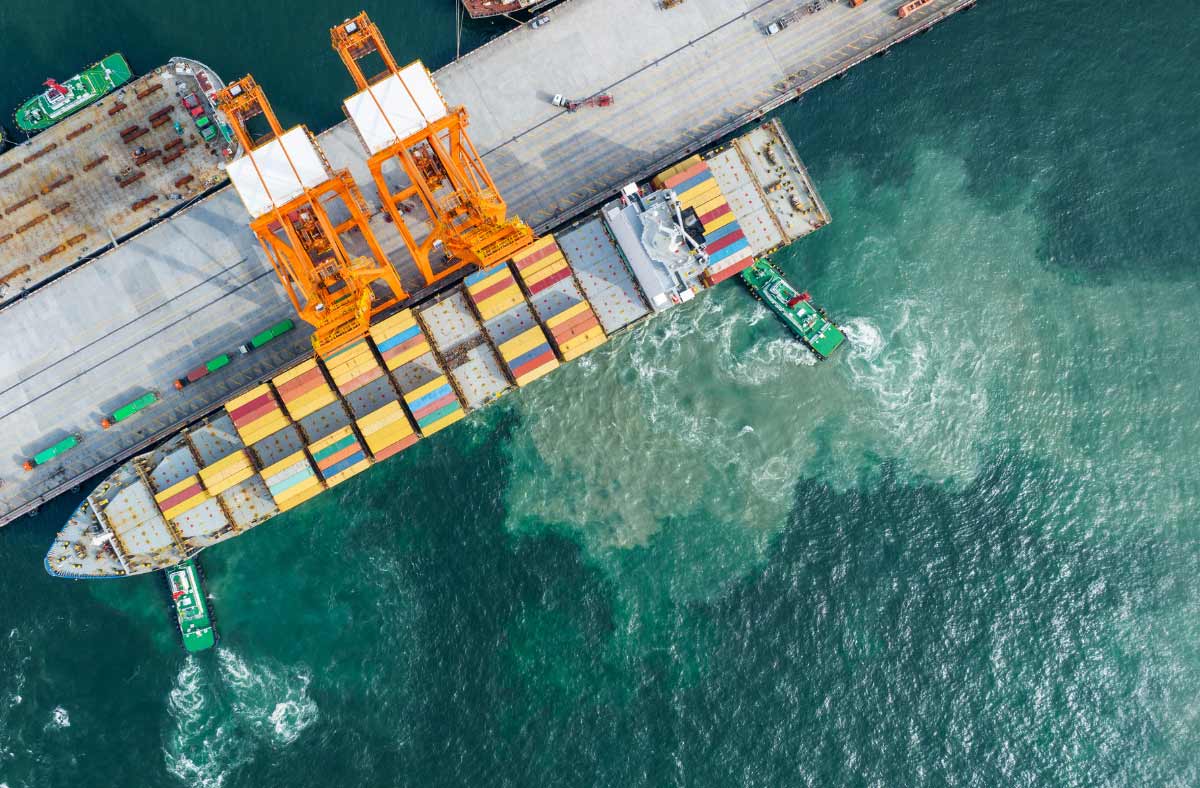Even if a person doesn’t cross any borders over the next year, their shipping footprint might. According to the International Chamber of Shipping, 11 billion tons of goods move via ship each year—enough to represent 1.5 tons per person.
International customs have to deal with an increasingly complex network of international movement—from shipping to travel customs—without incurring any new security risks. This is a lot for any system to handle. But without effective technology to help, customs compliance can be a nightmare.
Fortunately, there’s a potential solution: implementing AI in customs processes.
Algorithmic processes for scanning and determining HS codes, handling eCommerce customs declaration, and international trade facilitation are potential game changers.
If AI is helping the customs industry streamline a process like determining HS codes, for example, it can reduce processing time and human error. The result: more accuracy, faster cross-border movement, and smoother world trade.
But how are customs officials using AI, and is it having an impact? Let’s start with one of the most vexing challenges for customs officials: HS codes.
Streamlining HS classification with AI
Harmonized System codes are vital for classifying goods for customs. They identify product categories, help countries accurately apply their tariffs, and track trade data. However, they also add potential wrenches to the system, which can make customs processing more complicated.
The sheer volume and complexity of these products can be difficult to deal with. Yet according to Aleksei Bondarenko, Ph.D., an international trade consultant, implementing AI can drastically simplify HS classification and processing.
With AI assistance, customs officials could potentially reduce the time they spend on determining HS codes by up to 80%.
If possible, this would help eliminate customs logjams and make customs much easier to handle for large-scale trade.
It’s also a benefit for e-commerce. An e-commerce company might ship thousands of products worldwide. In many cases, businesses assign HS codes themselves and are responsible for doing so accurately. Repeating this process manually can be a hassle for companies that could otherwise spend time thinking about fulfillment and getting their orders shipped on time.
Tools like Traide and eClear offer AI-enabled support for identifying products for international shipping, taxation, and more. With the right offering, AI can help lower the barrier to entry for up-and-coming e-commerce businesses.
AI in customs declarations and documents
If every country had similar rules, customs declarations wouldn’t be a problem. But it’s a big world. And every country has its own set of rules.
A lot of elements can impact how shipping works between multiple countries. A country might set especially stringent customs laws, requiring multiple parties to approve certain types of products. Another country might have higher tariffs on specific industries or products from particular countries, increasing the financial burden on anyone doing the importing/exporting. And if there’s a mistake with any of the above, it can throw a wrench into just about any customs processing system and create all sorts of headaches
But there’s hope.
“AI can streamline the preparation of customs documents, particularly customs declarations,” notes Aleksei Bondarenko.
“AI systems autonomously extract necessary information from provided documents such as invoices, bills of lading, and certificates, as well as from ERP systems, and automatically draft the declarations.”
In other words, AI cuts the busywork out of customs declarations and documents—cumbersome, error-prone work that might be full of difficulties if handled the traditional way.
AI is also comprehensive. It doesn’t get tired and its vision doesn’t get blurry when it’s close to the end of the day. For example, AI systems might receive different styles of documents related to customs processes—invoices, bills of lading, certificates of origin. Too many documents from too many sources might overwhelm someone who’s looking forward to lunch. But with algorithms and trained models, AI can quickly disseminate disparate information and consolidate it for easier processing.
Information extraction works the same way. Thanks to the sophistication of modern AI, it’s capable of scanning documents and extracting relevant data on its own. Product descriptions, quantities, HS codes—AI can handle them all. And it’s capable of detecting what type of information it might be looking at in a specific context.
AI models can then structure this data into an organized, preformatted output, making it easier for customs officials to process. This streamlines their ability to work, saves time, and ultimately, helps ensure more accuracy.
One potential output: customs declarations. Professionals can look over customs declarations for accuracy, of course—and they should. But the drafting of the declarations can sometimes be tedious work. And it’s work that AI can easily fill. Even with some time spent reviewing the facts of the customs declarations, the overall time spent creating these declarations would be a fraction of the time it took to create and edit them.
Services like icustoms and Descartes Systems Group are helping companies fill in the difficulties of customs processes with machine-based support.
Using AI to recognize patterns and analyze risk
If facilitating trade were as easy as stamping the receipts, there wouldn’t be any risks involved. But customs authorities also have to balance their facilitation of quick, seamless trade with the risks. Smuggling, fraud, and customs compliance issues make it difficult to achieve faster customs processing.
But AI does have some promising solutions. It can analyze a vast amount of historical data to look for patterns. Once it has those patterns, it can even predict potential risks with accuracy.
AI won’t wipe out the need for human supervisors—but it can flag high-risk shipments based on factors like product types, compliance issues throughout the product’s commercial history, and more.
The result is that customs officials achieve a more thorough grasp of everything that’s moving underneath them.
Automating regulatory verification
Finally, trade regulations are there for a reason. Ensuring commerce meets the needs of these regulations can get complex, however. Customs officials have to verify their shipments adhere to the laws and standards of the country that enforces them. The more countries get involved, the more complex compliance inspection becomes—which slows down commerce.
AI can help with compliance inspections by automating regulatory verifications. For example, an AI tool might cross-reference shipment data with any applicable regulations. If it spots a discrepancy, it can flag it for supervisors to review.
Everything from accurate HS codes to proper documentation can fall under the watchful eye of AI.
Integrating AI into customs processes can be transformative. Global trade is increasingly complex. New regulations pass all the time. Situations change, nations modify trade agreements, and new products enter the marketplace. Thanks to the speed of comprehensive reviews of AI, that doesn’t have to be a problem.
In the future, customs processing will likely be a hybrid of AI-enabled tools and human supervisors double-checking the work. AI won’t replace humans, but it will make them faster—and that could make customs processing a much more efficient process across multiple borders.







Brilliant insights, Dan! As someone deeply engaged in global sourcing and international logistics, I can confirm that AI’s integration into customs operations isn’t just a technological upgrade—it’s fast becoming a strategic necessity.
From automated HS code classification to AI-driven customs declarations and real-time compliance monitoring, we’re seeing a paradigm shift that’s enabling MSMEs to trade smarter, faster, and with fewer barriers. Especially for businesses navigating complex cross-border supply chains, AI is proving to be the silent workhorse behind accurate documentation, reduced delays, and smarter risk assessment.
What excites me most is the potential of AI to democratize global trade, making it more accessible to emerging players through intuitive tools and smarter processes. As trade continues to scale, customs modernization through AI is not just helpful—it’s inevitable.
? More on how we support global sourcing and customs optimization: http://www.virtuousind.com
? Let’s connect and exchange ideas: Vijay Bhasin – Global Trade Strategist
#GlobalTrade #CustomsAI #SourcingSolutions #TradeCompliance #HSCodeAutomation #VirtuousInd